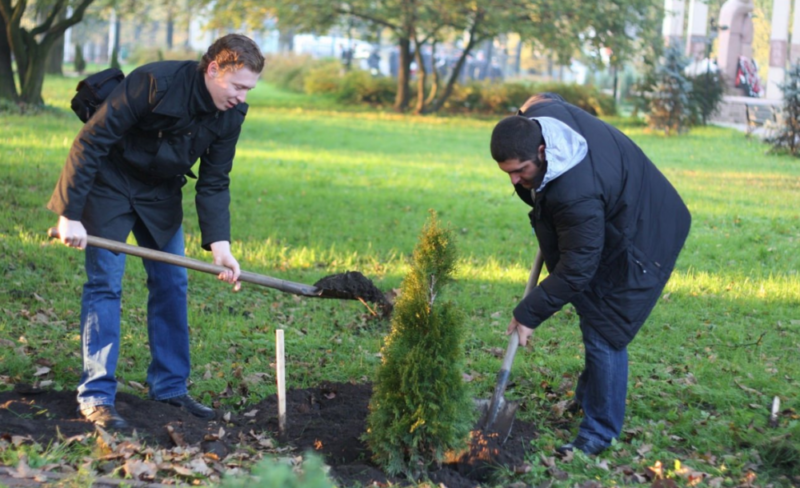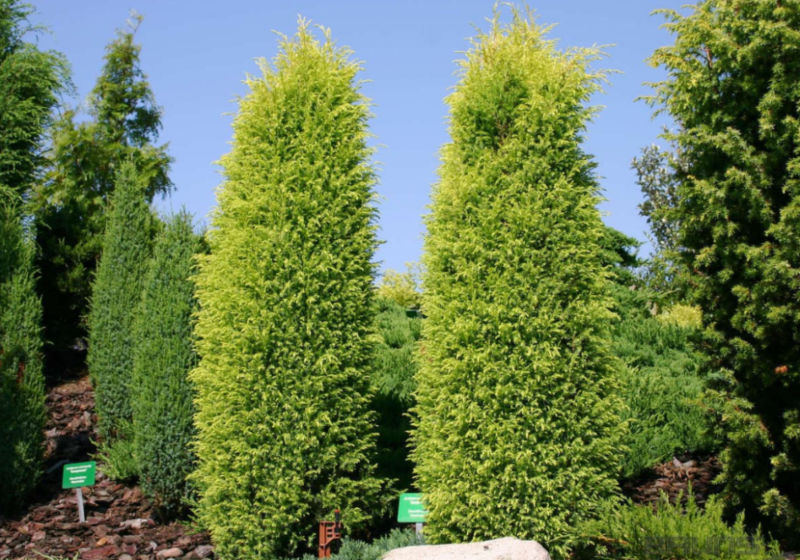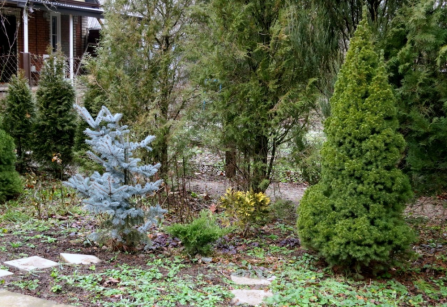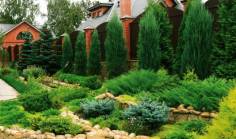In the design of the landscape of the garden often use juniper "Hibernica" (hibernica), which is so unpretentious that even the most inexperienced gardener will cope with its cultivation.
Material Content:
Description of common juniper variety “Khibernik”
Juniper ordinary "Khibernika" is a shrub that has a pyramidal shape. The plant reaches a height of 4 meters. Juniper needles can be either gray-green or bluish.
If you make a brief description of the variety, the culture is unpretentious, has a very dense crown, gives an increase of only 15 cm per year. The diameter of the bush can reach one and a half meters. Fruits in berries in the form of cones with a diameter of up to 1 cm. Ripe fruits are gray-black.
Planting and plant care
The plant is very photophilous, therefore, for its planting, you should choose a site illuminated by the sun throughout the day.
In the shade, the shrub will lose its decorative effect and take on a “disheveled” appearance.
This juniper variety also grows well in openwork partial shade. In the southern regions, where the sultry period begins in summer, it is advisable to plant “Khiberniki” in slightly shaded places, since the sun can burn the needles. The place should be quiet, protected from the wind.
Shrub prefers neutral or slightly acidic soil. If the soil is excessively acidified, it is useful to mix dolomite flour during planting. Usually a seedling is covered with a mixture of sand, turf and peat, taken in equal proportions.
Juniper planting is preferred in the second decade of April. It is possible to carry out work in early autumn.
Planting a plant step by step:
- Wells are marked out in a previously dug area. They should be twice as large as the rhizomes of seedlings. The depth of the pit is about 70 cm.
- At the bottom of the pits, drainage from chipped brick or expanded clay is sure to be laid.
- The seedling is lowered in the center of the hole and sprinkled with the prepared mixture. When planting, it is important to ensure that the neck remains open.
- After the events, the “new settler” shed abundantly and must be mulched.
In the first week, the planted plant needs plenty of moisture and shade.
Juniper care comes down to regular watering and weeding. At the end of the work, the soil is loosened and mulch round circles. As such a composition, grass, chopped straw, peat or sawdust can be used.
Junipers gratefully respond to the introduction of nitrogen-phosphorus fertilizing. You can fertilize bushes with nitrophos. Perform the procedure in the spring.
Before the onset of the first frosts, they begin to prepare the culture for wintering. At this time, pruning of dried branches is carried out. So that they do not break, the branches need to be tied to the trunk. Juniper "Hybernik" tolerates cooling only up to -17. Therefore, in regions with a harsh climate, shrubs should additionally be covered with lapnik or wrapped with foil.
Shrub pruning pattern
This evergreen shrub grows very slowly, therefore it does not need pruning at all. They do this only after the snow melts, cutting off dried, broken and weak twigs. It is possible to carry out a similar sanitary haircut before wintering.
Trimming is carried out only with a sharp and sterile tool. Usually use garden secateurs. In this case, all diseased parts are removed to healthy tissue.
Protection against diseases and pests
Juniper ordinary "Hybernica" is very resistant to disease. The main danger to the plant is rust - a fungus that manifests itself in the formation of fleshy growths on the branches. Fungal spores can enter plants and neighboring trees. It’s easier to prevent the disease than to subsequently treat the “patient” for a long time. Because junipers are recommended to be planted at some distance from trees and shrubs. If Khybernika is still ill, he is sprayed twice with a fungicide, and the affected parts are cut off. Most often, Bordeaux is used to get rid of rust.
Junipers attack insects from sawflies. This pest can lead in a short time even to the death of the bush. To protect the plant from invasion of parasites, you should spray the shrub and the ground around with decoctions of insecticidal plants.
Use in landscape design
Representatives of the Cypress family are very decorative. Junipers are especially used when creating a garden design. For example, “Khiberniku” is planted as a focal plant on a flowering flowerbed, decorating it thanks to the colonized crown of the plant.
It is advisable to choose places near crops that have the same soil composition preferences. Decorative junipers are often used to create hedges or plant them along garden paths. Wonderful neighbors will be heather, blooming bulbous, ferns, daylilies.
Khibernika attracts a lot of attention with its original, harmonious look. Juniper is characterized by unpretentiousness and ease of care, as well as resistance to the onset of diseases.



















